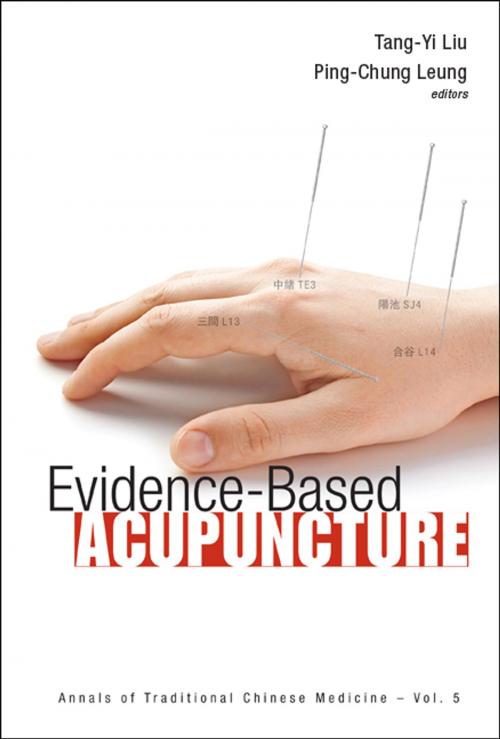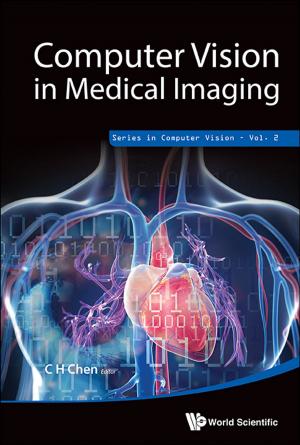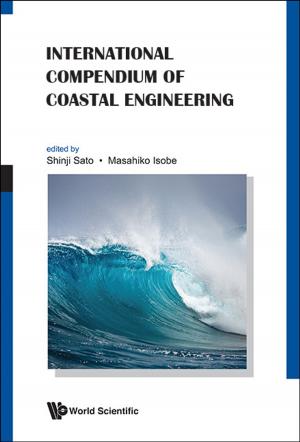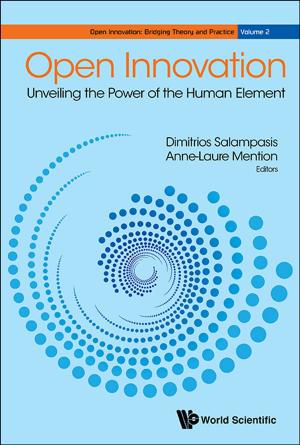Evidence-Based Acupuncture
Nonfiction, Health & Well Being, Medical, Alternative & Holistic Medicine, Acupuncture, Alternative Medicine, Religion & Spirituality, New Age| Author: | Tang-Yi Liu, Ping-Chung Leung | ISBN: | 9789814483858 |
| Publisher: | World Scientific Publishing Company | Publication: | November 29, 2012 |
| Imprint: | WSPC | Language: | English |
| Author: | Tang-Yi Liu, Ping-Chung Leung |
| ISBN: | 9789814483858 |
| Publisher: | World Scientific Publishing Company |
| Publication: | November 29, 2012 |
| Imprint: | WSPC |
| Language: | English |
Acupuncture has been an important branch of Traditional Chinese Medicine for over 3000 years and is the most popular practice among non-Chinese practitioners outside of China. In 1998, the United States National Institutes of Health (NIH) held a consensus conference and endorsed the practice of acupuncture as an effective pain control agent — since then acupuncture has become even more popular.
Clinical practice is always an inviting form of research. In the field of acupuncture, research concentrates on the neurological pathways of the meridians and acupoints, the neurological functional changes within the central nervous system, and innovative devices being invented, etc. It appears that there will be a long way before firm explanations can be acquired for the explanation of the physiological effects of acupuncture.
The technique of acupuncture is easily acquired although the evidence of efficacy remains subjective. Before the evidence can be sorted out through scientific explorations, confidence on efficacy can rely only on literature search and sharing of expert experiences.
This is a user-friendly book for all professionals practicing acupuncture. The contents consist of all the popular areas of clinical application viz. pain control and neuromuscular training. Each chapter is composed of two parts: clinical evidences as previously recorded in literature and personal experiences of the author. Acupuncture practice requires a thorough knowledge of the treatment choices relevant to particular conditions, as well as their modifications. This book offers quick references for this purpose.
Contents:
-
Physiological Basis:
- Acupuncture for Pain Control
- Acupuncture for Neurological Deficits
- Acupuncture for Immunomodulation
- Acupuncture for Endocrine Function
-
Common Practices:
- A Practical Approach to Acupuncture
- Technique of Manual Puncturing
- Acupuncture for Headache
- Acupuncture for Stroke
- Acupuncture for Asthma
- Acupuncture for Joint Pain
- Acupuncture for Bladder Control — Treatment for Urethral Syndrome in the Women
- Acupuncture for Quitting Smoking
- Acupuncture for Other Conditions — Obesity, Skin Conditions, Hyperthyroidism and Ulcerative Colitis
- Discovery of Novel Acupuncture Points
- Electrical Acupuncture
Readership: Acupuncturists, practitioners, students in Chinese Medicine, physiotherapists, dentists.
Key Features:
- Provides acupuncture practitioners practical guidance for the treatment of common ailments
- Offers literature evidence of the various applications
Acupuncture has been an important branch of Traditional Chinese Medicine for over 3000 years and is the most popular practice among non-Chinese practitioners outside of China. In 1998, the United States National Institutes of Health (NIH) held a consensus conference and endorsed the practice of acupuncture as an effective pain control agent — since then acupuncture has become even more popular.
Clinical practice is always an inviting form of research. In the field of acupuncture, research concentrates on the neurological pathways of the meridians and acupoints, the neurological functional changes within the central nervous system, and innovative devices being invented, etc. It appears that there will be a long way before firm explanations can be acquired for the explanation of the physiological effects of acupuncture.
The technique of acupuncture is easily acquired although the evidence of efficacy remains subjective. Before the evidence can be sorted out through scientific explorations, confidence on efficacy can rely only on literature search and sharing of expert experiences.
This is a user-friendly book for all professionals practicing acupuncture. The contents consist of all the popular areas of clinical application viz. pain control and neuromuscular training. Each chapter is composed of two parts: clinical evidences as previously recorded in literature and personal experiences of the author. Acupuncture practice requires a thorough knowledge of the treatment choices relevant to particular conditions, as well as their modifications. This book offers quick references for this purpose.
Contents:
-
Physiological Basis:
- Acupuncture for Pain Control
- Acupuncture for Neurological Deficits
- Acupuncture for Immunomodulation
- Acupuncture for Endocrine Function
-
Common Practices:
- A Practical Approach to Acupuncture
- Technique of Manual Puncturing
- Acupuncture for Headache
- Acupuncture for Stroke
- Acupuncture for Asthma
- Acupuncture for Joint Pain
- Acupuncture for Bladder Control — Treatment for Urethral Syndrome in the Women
- Acupuncture for Quitting Smoking
- Acupuncture for Other Conditions — Obesity, Skin Conditions, Hyperthyroidism and Ulcerative Colitis
- Discovery of Novel Acupuncture Points
- Electrical Acupuncture
Readership: Acupuncturists, practitioners, students in Chinese Medicine, physiotherapists, dentists.
Key Features:
- Provides acupuncture practitioners practical guidance for the treatment of common ailments
- Offers literature evidence of the various applications















